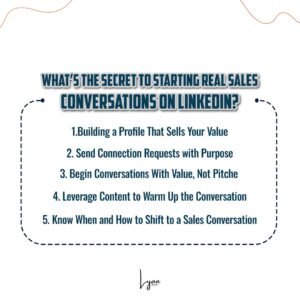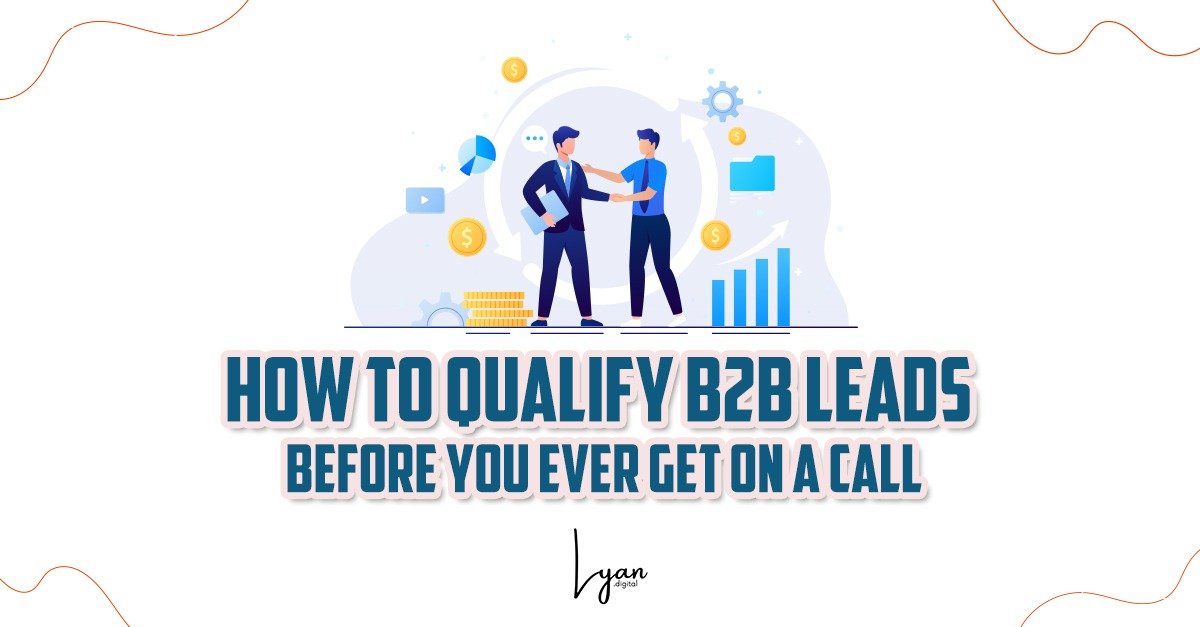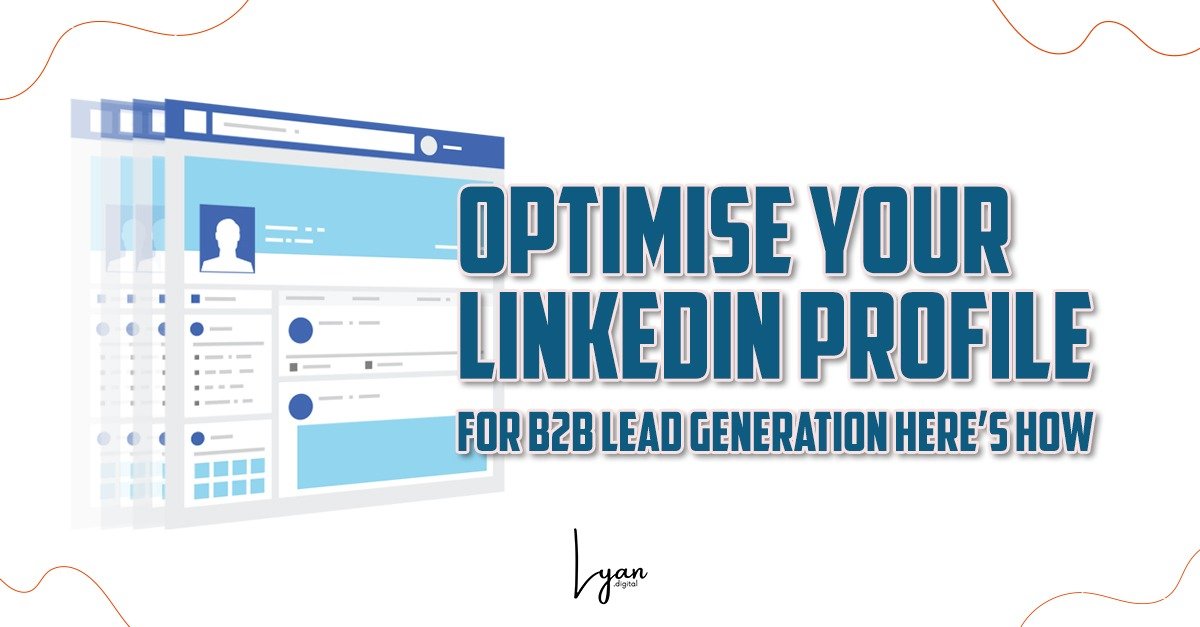In 2025, all B2B sellers are on LinkedIn but not very many can turn a “Thanks for connecting” into a productive sales conversation. The days of mass messaging, cold pitches, and automation overload are over. Buyers now expect conversations that feel relevant, human, and valuable. This blog deconstructs how to move beyond connection requests and initiate genuine, high-intent sales conversations that turn curious connections into closed deals without sounding like a salesperson.
1.Building a Profile That Sells Your Value
Your profile must earn someone’s attention before you can message them. Consider it your quiet sales representative. Make your value proposition stand out clearly in your headline and have your About section be like a manifesto of a problem-solver rather than a résumé.
Add proof points, client wins, and a soft CTA that makes it simple for a visitor to go on to the next step. Prospects usually look at your profile before responding make it worth their while.
Key Insight: A well-optimised profile earns trust without effort. When done correctly, your connection doesn’t inquire, “What do you want?” they ask, “Can you help me?”
-
Send Connection Requests with Purpose
Don’t just click “Connect” and hope for the best. Add a short note that shows you’ve done your homework reference a recent post, shared interest, or role-specific insight. This sets the tone for a conversation, not a cold pitch.
Avoid pitching in the request. Instead, focus on earning attention. The goal is to open a door, not sell at the doorstep.
Key Insight: The greatest connection requests are not about you they’re about them. Relevance is what gets the click and keeps you off the ignore pile.

- Begin Conversations With Value, Not Pitches
When they respond, don’t dive into pitches. Begin with a question, resource, or insight specific to their job or industry. For instance:
- “Saw your post on X curious how you’re approaching Y?”
- “We just put out a rapid read on a trend impacting [their industry] thought you’d find it of use.”
- Make it conversational. It’s like networking at an event don’t begin by saying “Wanna buy.”
Key Insight: Sales conversations are actual conversations that start out being real. Begin with relevance, and trust will develop naturally.
- Leverage Content to Warm Up the Conversation
Brilliant content fills the gap between cold outreach and incoming interest. When your lead reads about you consistently, you become known even though you’ve never met.
Tag connections wisely, comment on their updates, and pass along materials they’ll truly be interested in. This attracts attention without messaging at all.
Key Insight: Content is your quiet wingman. It builds trust, establishes thought leadership, and makes follow-up outreach a natural fit not haphazard.
- Know When and How to Shift to a Sales Conversation
If a prospect replies or indicates interest, then it’s time to drill down but with caution. Ask them what are their pain points, provide social proof, and move towards discovery call or demo.
Make soft transitions such as:
- “Would it make sense to look at whether this would be a good fit for your team?”
- “Glad to share how we assisted someone in a similar position if helpful.”
- No pressure, just opt-in progress.
Key Insight: Sales is not about pushing results. It’s about recognizing shared value and allowing the conversation to guide the way.
How Lyan.digital Can Assist
We assist B2B brands to dominate LinkedIn not only as a social media network but as a strategic sales pipeline. We design LinkedIn experiences that begin with connection and end in conversion.
Here’s how we do it:
- Writing personalized outreach emails that open the door to conversation
- Building thought leadership through high-impact content
- Tracking what is working and optimizing for more engagement
- Monitoring what works and optimising for greater engagement
- Integrating outreach with your overall sales and marketing objectives
With Lyan.digital, you don’t just connect you convert.
Frequently Asked Questions:
I should send a message immediately after someone has accepted my connection, right?
Yes, but let it be warm and friendly. Mention the bond and give them something that’s relevant not a sales pitch.
What if they don’t respond to my initial message?
Wait a few days, then send a new one like a question or some content. No pushy reminders.
Is commenting on posts better than direct messaging?
They both work, but comments tend to create passive trust. They familiarize your name so your DMs don’t feel as intrusive.
After how many messages should I propose a meeting?
It varies based on the flow, but generally after 1–2 value-based exchanges, you can suggest a brief intro call.
Real-Life Scenarios
A SaaS founder was sending cold DMs with no responses.
We refocused his strategy with a profile update, content highlighting industry expertise, and friendly connection messages. Within one month, he landed 11 pre-qualified demos all on LinkedIn.
A marketing consultant was ghosting prospects following connection.
We introduced a sequential follow-up series: Day 1 welcome, Day 4 useful article, Day 7 check-in question. Her engagement rate increased by 67%, and she closed two new clients from LinkedIn alone.
A B2B sales representative made use of LinkedIn solely for profile browsing.
Having trained him on soft engagement (comments, DMs, content approach), he increased from 0 to 5 sales-qualified leads weekly without adding connection requests.
Final Thoughts
Real sales in 2025 don’t begin with a pitch they begin with a conversation. LinkedIn is not a cold calling platform disguised as such. It’s a platform where relationships are built and trust is established by way of relevance, consistency, and care.
If you’re ready to go beyond connection requests and start real, revenue-generating conversations, the strategy starts here.




